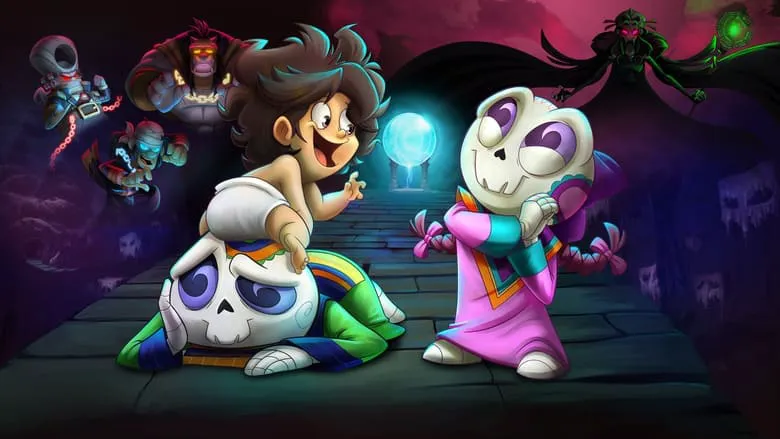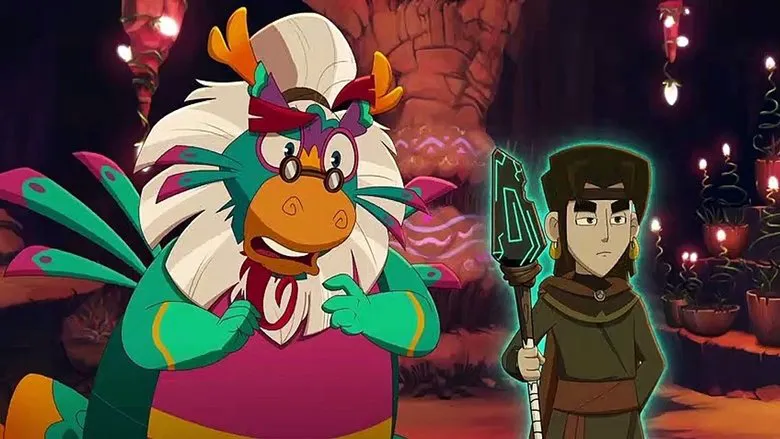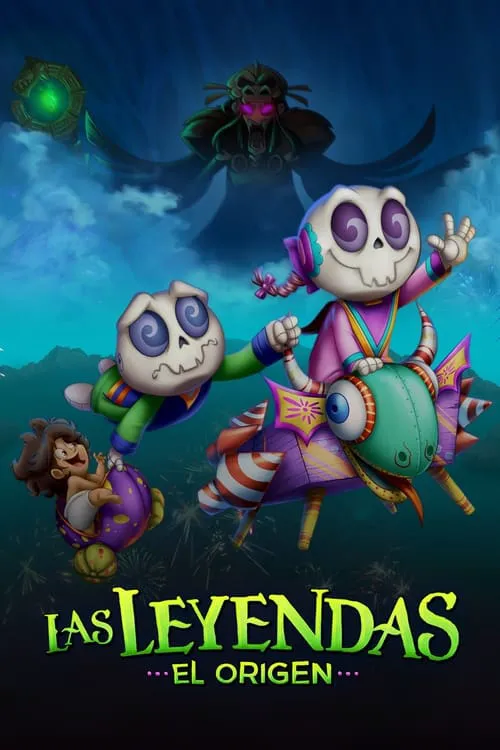Unveiling Ancient Worlds: The Making of “Eternal Mirror”
“Eternal Mirror” doesn’t just invite audiences into a fantasy world; it plunges them deep into a vibrant, perilous realm where ancient Mesoamerican legends collide with present-day heroism. This cinematic triumph, directed by visionary filmmaker Elena ‘Eli’ Rojas, weaves a masterful narrative around the thin veil between life and death. More than just a fantastical adventure, “Eternal Mirror” embarks on a profound journey through spiritual dimensions, guided by an ominous prophecy that could shatter humanity. But how did this epic tale, rooted in the rich tapestry of Mexican folklore, translate from compelling script to breathtaking screen? Join us as we delve into the intricate “making of” this truly unique spectacle.

The Genesis of a Legend: Crafting the Mythos
The backbone of “Eternal Mirror” is its meticulously crafted mythology, a world where the “Gate of the Gods” is not just a metaphor but a tangible, menacing threat. Director Eli Rojas and screenwriter Gabriel ‘Gabe’ Silva painstakingly researched various Mesoamerican cultures, particularly Aztec and Mayan lore, to build a universe that felt both historically authentic and utterly fantastical. “Our goal was to honor the spirit of these ancient stories, their weight, their poetry,” explains Rojas, “while weaving them into a narrative that resonates universally around themes of courage, family, and destiny.”
The concept of the “Eternal Mirror” itself, a mystical portal between worlds, was born from fragmented historical texts and reimagined to serve as the narrative’s central fulcrum. The dark god Tezcalipoca, a menacing deity from Aztec mythology, provided a powerful and visually striking antagonist, lending the film its chilling, apocalyptic undertones. Silva elaborates, “We started with the darkest parts of the lore – the sacrifices, the cosmic dread – and then introduced the purest hope, symbolized by the innocent baby and our three young heroes, creating this incredible balance of light and shadow.”
Bringing Heroes to Life: Casting and Character Immersion
Casting the heroic trio of Nahui, Itzel, and Ixchel was paramount to the film’s success. Rising star Mateo Reyes brought a raw, emotional intensity to Nahui, embodying the brave warrior’s personal grief and his fierce determination to protect his family. “Nahui’s pain felt very real to me,” Reyes admits. “His drive for vengeance against the underworld and his love for his village – that’s what grounded him.”
For Itzel, the wise strategist, accomplished actress Sofia Rodriguez delivered a performance of quiet strength and intellectual depth. Her nuanced portrayal anchored the film’s reliance on ancient wisdom and provided crucial emotional gravitas during moments of desperate decision-making. And for Ixchel, the young dreamer with an ethereal connection to the spirit world, newcomer Camila Flores delivered a captivating performance suffused with innate wonder and vulnerability. Her ability to portray communication with ancient gods required extensive guided meditation and improv workshops.

Their palpable chemistry, which blossoms from cautious companionship to unbreakable friendship, was cultivated through extensive rehearsals, wilderness training, and collaborative improvisation. “It wasn’t just about learning lines,” Rodriguez states. “We lived some of their journey together—enduring long shoots in challenging terrain—and that built a bond that truly reflected what you see on screen.”
Crafting the Tapestry: Production Design and Visual Spectacle
The visual world of “Eternal Mirror” is as much a character as its protagonists. Production designer Diego Rivera (no relation to the famous painter, though equally artistic) led the charge in transforming quaint Mexican village aesthetics into a living, breathing backdrop, contrasting the cozy familiarity of the mortal realm with the ominous grandeur of the underworld’s encroaching influence. “We wanted the village to feel like home, something truly worth fighting for,” Rivera explains. “And then, as our heroes ventured out, the landscapes had to reflect the escalating peril.”
The “treacherous terrain of the Mexican highlands” was either captured on breathtaking practical locations, requiring intricate logistics and safety measures, or meticulously recreated on vast soundstages, often requiring a seamless blend of practical sets and digital extensions. The visual effects department, under the supervision of acclaimed VFX artist Anya Sharma, truly pushed technological boundaries. Bringing Tezcalipoca’s monstrous forces and the ethereal, yet terrifying, properties of the Eternal Mirror to life required ground-breaking motion capture and advanced CGI. “Every creature, every spectral vision – from the vengeful ancestors to the hordes of underworld beasts – had to feel like it sprang directly from ancient nightmares,” states Sharma. “The scale of the final battle against Tezcalipoca demanded a level of visual epicness we were determined to achieve.”

The Sound of Prophecy: An Auditory Journey
Beyond the stunning visuals, “Eternal Mirror” immerses audiences through its evocative soundscape. Composer Marco Ramirez crafted a score that masterfully blends traditional Mexican instruments—like the haunting flutes and powerful drums—with sweeping orchestral melodies, creating an auditory landscape that is both ancient and epic, reflecting the grandeur and terror of the story.
The sound design team meticulously layered indigenous chants, the ghostly whispers of benevolent ancestors, and the guttural roars of underworld creatures, creating an immersive, multi-sensory experience designed to pull the audience deeper into the mystical journey and send shivers down their spines during terrifying encounters.
A Legacy of Courage: The Enduring Impact
“Eternal Mirror” stands as a testament to audacious cinematic ambition and profound cultural appreciation. From its deep dive into Mesoamerican mythology to its dynamic performances and groundbreaking visual spectacle, the film offers a thrilling ride that celebrates the enduring power of friendship and hope in the face of insurmountable odds. The epic duel between Nahui and Tezcalipoca, a highlight of the film’s climax, required months of choreography and digital wizardry to execute, ensuring every blow resonated with both physical force and spiritual significance.

Ultimately, “Eternal Mirror” is more than just an action-packed fantasy; it’s a testament to the idea that even in the darkest prophecies, the light of human perseverance, guided by courage and the unbreakable bonds of friendship, can prevail. It is a world-spanning adventure that truly unlocks the “gate of the gods” for audiences everywhere, reminding us that legends are not just stories, but blueprints for heroism that can guide us through any mirror, into any realm.